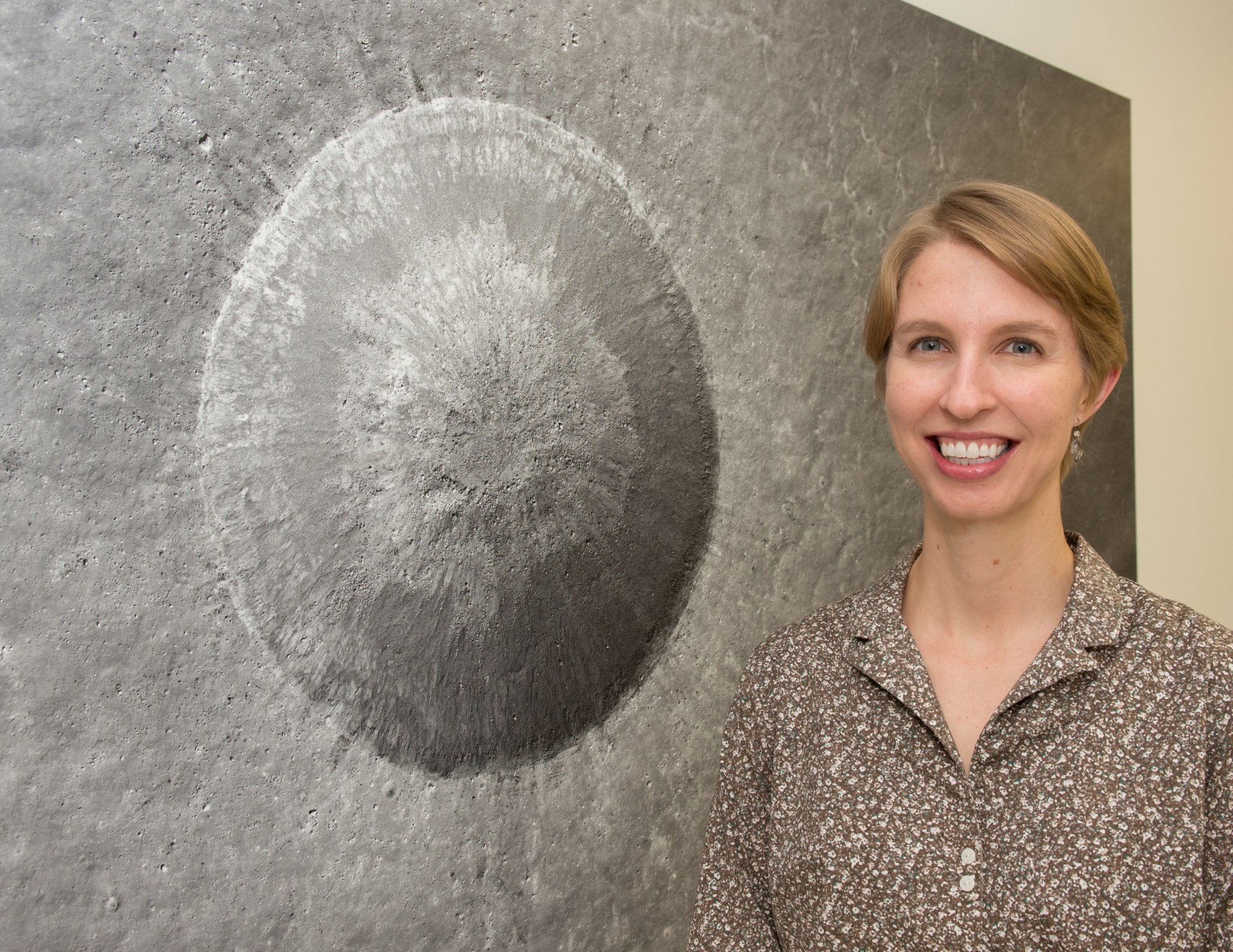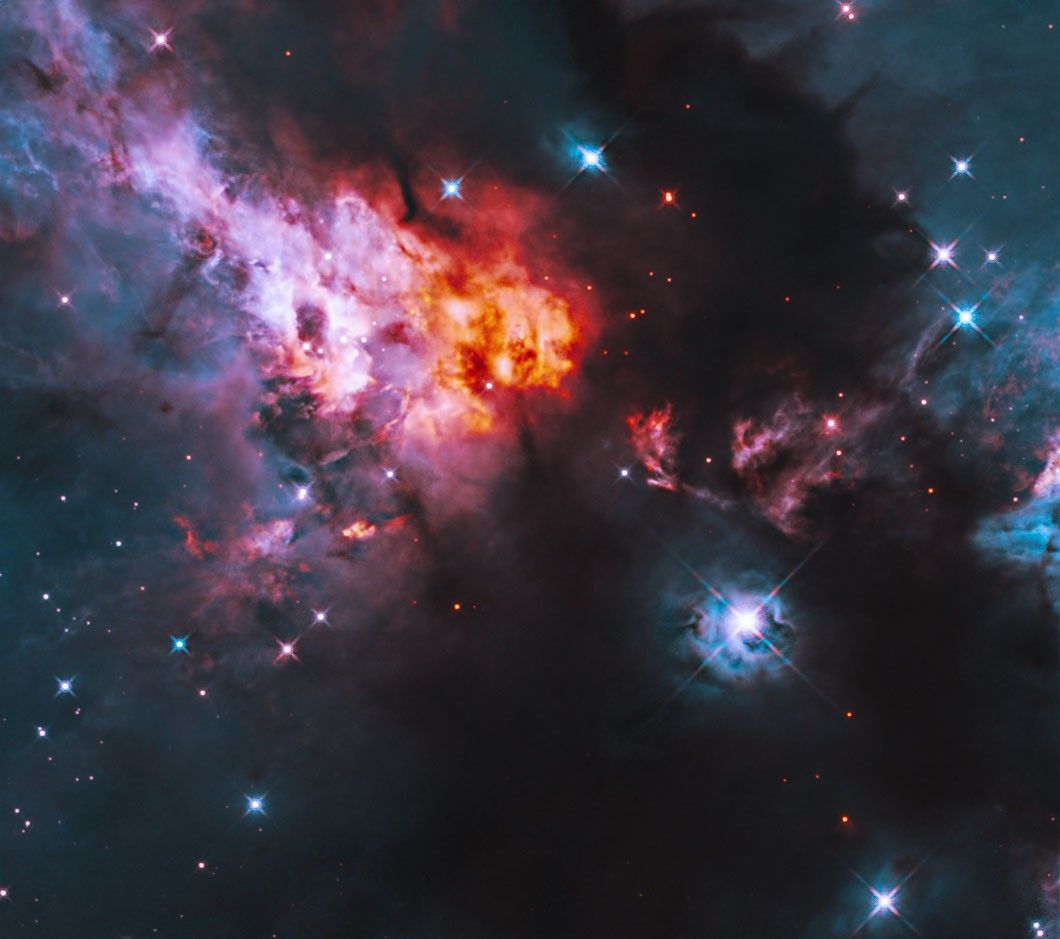Name: Andrea Jones
Title: Education and Communications Specialist
Organization: Code 690, Solar System Exploration Division, NASA’s Goddard Space Flight Center
What do you do and what is most interesting about your role here at Goddard? How do you help support Goddard’s mission?
I am a planetary geologist now focusing on education and communication. I work with NASA planetary science missions and research teams to find out the latest planetary science results and discoveries and share them with different audiences. I try to make science interesting and meaningful to all of our audiences.
I am part of several NASA planetary science missions and research teams including the Lunar Reconnaissance Orbiter and the Mars Science Laboratory Curiosity rover missions and several NASA Solar System Exploration Research Virtual Institute (SSERVI) teams. I occasionally participate in field research and sometimes bring students or educators as well. I attend scientific conferences to find out the latest science in the field on a broad scale.
I work with educators such as librarians, museums professionals, park rangers, and NASA Solar System Ambassadors, as well as the public. I design, lead and contribute to professional development programs for these audiences. Colleagues and I develop and share educational and outreach resources, including handouts and visualizations. We participate in conferences designed for the audiences we serve to share information, resources and opportunities and also to learn more about the interests and needs of these audiences so that we can better serve them moving forward. We also lead and contribute to numerous outreach events and programs.
Why did you get into this line of work?
I have always been interested in the Earth and the sky. In high school, Earth science and astronomy were my favorite subjects. Going into college, I knew I wanted to major in geology or astronomy. My college did not have an astronomy major, so I went into geology and discovered a new field: planetary geology. I was hooked.
My favorite part of being a research scientist was sharing the science and getting other people excited about it. I used to talk primarily about my own work. Now I get to learn about and share NASA planetary science research much more broadly.
What is your educational background?
I have an undergraduate degree from the College of William & Mary in geology with a focus in planetary geology. I have a master’s degree in geosciences from the University of Arizona, also with a focus in planetary geology.
In between college and graduate school, I spent a season at Canyonlands National Park in Utah leading educational programs for kids and helping at their visitor center. I helped update an astronomy program for visitors. One day a week my job was to hike through the park to become more familiar with its trails and vistas, check in with visitors I met along the way, and monitor trail maintenance needs. It was fabulous!
I also worked as an instructor at an outdoor science school in the San Bernardino Mountains of California. This was another fabulous job! Kids came for about a week at a time. We taught them about geology, astronomy, nocturnal creatures and microbes. We also taught line dancing, orienteering and outdoor survival. Additionally, we had campfire programs.
Our classes were outside whenever possible. We would hike through the woods and teach the kids about the birds that were singing in the trees and plants we found along the way. Many kids came from the inner city. Some of them had never seen squirrels or even trees before. Especially in the beginning of the week, classes would stop when they saw a squirrel and ran to take a photo.
What are some of the most fun things you have done as a planetary science educator?
I get to do fun things every day! I work with so many wonderful people and I get to hear and discuss such interesting things every day. I love my work.
One time I contributed to a program for international visitors at Goddard. A participant later invited me to give a keynote lecture in Poland about women at NASA and how we share NASA science with women and girls in our country. I was honored by the opportunity and really enjoyed the experience.
Another fun thing I do is help lead an annual space science festival in Death Valley National Park. NASA has a long, rich history of conducting research in Death Valley, but many park rangers and visitors are not aware of this work. In the spring, we host a festival celebrating this heritage, as well as the park’s incredible dark skies. The rangers, who pick up lots of information from the festival, continue to share highlights with visitors throughout the year — a lasting impact from the event.
Please tell us about some of your field deployments.
I have participated in several planetary science field excursions. Sometimes I bring students or educators with me. I go to collect images and samples and better understand the research being conducted so that I can more effectively share this research with others.
A few years ago, I helped bring a group of journalism students to Hawaii to work with one the NASA SSERVI RIS4E science team. They reported on planetary science field work in action through photos, videos, and interviews they collected in the field.
This past summer I participated in a field campaign with another NASA SSERVI science team, the FINESSE team, deployed in Iceland. I learned more about the research the team is doing here on Earth to better understand volcanoes throughout the Solar System. I collected volcanic rock samples that we will share along with research highlights at outreach events. I also helped talk about the work on social media in real time.
How did you collaborate with the Smithsonian National Air and Space Museum?
The Lunar Reconnaissance Orbiter Camera team developed a gallery of images in collaboration with the Smithsonian National Air and Space Museum for an exhibit. A colleague and I worked with the Smithsonian’s team to develop educational content for the exhibit. We designed an impact cratering activity for the museum and helped the Smithsonian select areas of the lunar surface to make 3-D prints that museum visitors could touch, offering visitors multiple ways of learning about the lunar surface.
What do you do for Earth to Sky?
I am the Space Science Lead for Earth to Sky, an interagency partnership between NASA, the National Park Service, and the US Fish and Wildlife Service. My job is to bring NASA space science content to the visitors at our national parks, state parks, and public lands throughout the US. We provide training to rangers through professional development workshops and webinars, develop and support collaborations between our agencies, and share information, opportunities, and NASA resources. The rangers then share the content and resources with their visitors.
As the director for NASA of International Observe the Moon Night, to be held next on Saturday, Oct. 20, 2018, what activities are you planning?
This year we launched a new website that is full of information and resources: https://moon.nasa.gov/observe.
We have a Moon map showing the Moon in the phase it will be on International Observe the Moon Night, with descriptions of some of the features that will be visible. We have a Moon observation journal, which we encourage people to start at International Observe the Moon Night and continue throughout the next month, so that they can watch as the Moon appears to change over time from our Earth-bound perspective.
We want people to go outside and look up. Most people can see the Moon even without binoculars or a telescope, even in heavily light-polluted areas. But if you are lucky enough to see the Moon through a telescope, you can see landscapes and mountains and craters — an entire world!
The Moon is a gateway, a stepping stone to the rest of the sky. Looking at the Moon is an exciting way to start learning about other planets and perhaps helps people realize that though other planets may appear to be little more than points of light to the naked eye, they are entire worlds too.
This year we are going to highlight the 50th anniversary of the Apollo program through International Observe the Moon Night. At Goddard’s event, Goddard scientist Dave Williams will discuss Goddard’s participation in the Apollo program and how scientists continue using the data even today to make new discoveries about the Moon. Goddard scientist Kelsey Young will talk about the research we are currently doing on Earth to help prepare for the next human explorers of the Solar System. I’m also really excited about an Apollo Stories segment where several people will share their stories about how the Apollo program and the Moon landing affected their lives.
Every year we also celebrate the personal and cultural connections we have with our Moon. Everyone has a memory involving the Moon. Some of our language and art highlight the Moon. “Monday” gets its name from the Moon. Many libraries participate in International Observe the Moon Night and share wonderful books about the Moon.
What is your “six-word memoir?” A six-word memoir describes something in just six words.
Wife. Mom. Space-enthusiast. Happy person.
By Elizabeth M. Jarrell
NASA’s Goddard Space Flight Center, Greenbelt, Md.

Conversations With Goddard is a collection of Q&A profiles highlighting the breadth and depth of NASA’s Goddard Space Flight Center’s talented and diverse workforce. The Conversations have been published twice a month on average since May 2011. Read past editions on Goddard’s “Our People” webpage.
































